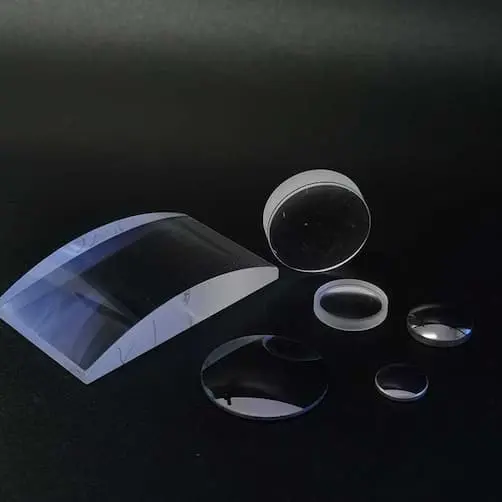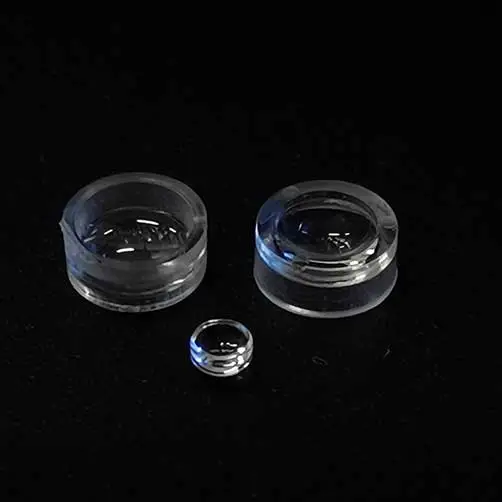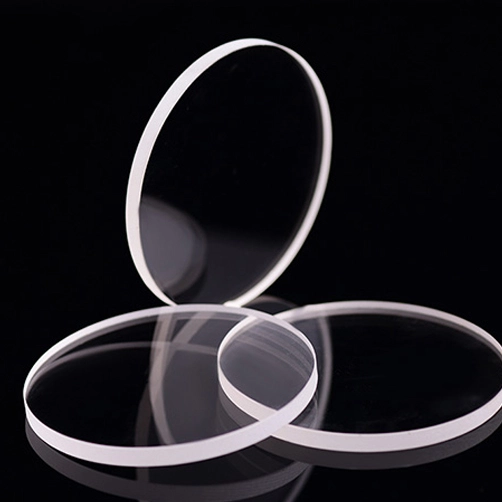Right angle prism is the 90 degree prism.
a. Standard Prism
b. Various Material
c. Differnet Coating
d. Good Price
Material | BK7 Grade A Optical Glass or UV Fused Silica |
Dimension Tolerance | +0.0, -0.2 mm |
Clear Aperture | >80% |
Surface Quality | 60-40 Scratch And Dig |
90° Deviation | 3', 1' or 30' |
Flatness | λ/2 @632.8 nm |
Protective Bevel | 0.25 mm x 45° |
Material | Optical Glass, Fused Silica, Sapphire |
Dimension | 1-250 mm |
Dimension Tolerance | +0/-0.1 mm |
Surface Flatness | λ/10@632.8 nm |
Surface Quality | 10-5 |
Angular Accuracy | 5 Second |
Coating | Uncoated, AR, HR, Beamsplitter, etc. |
Size (mm) | 3 min. Deviation | 1 min. Deviation | 30 sec. Deviation |
Part No. | Part No. | Part No. | |
A=B=C=3.2 | TAP101 | TAP201 | TAP301 |
A=B=C=4.0 | TAP102 | TAP202 | TAP302 |
A=B=C=10.0 | TAP103 | TAP203 | TAP303 |
A=B=C=12.7 | TAP104 | TAP204 | TAP304 |
A right angle prism and a polarizing beamsplitter cube are both optical devices used for different applications. Here are some key differences between the two:
Function: A right angular prism redirects light beams at a 90-degree angle, while a polarizing beam splitter cube splits light into two orthogonal polarizations while reflecting one of them at a 90-degree angle.
Structure: A right angular prism typically has two rectangular faces and an angled face that connects them at a 90-degree angle, while a polarizing beamsplitter cube is made of two prisms that are cemented together to form a cube.
Polarization: A right angle prism does not affect the polarization of an incoming beam of light, whereas a polarizing beamsplitter cube is polarized and can separate a beam of white light into its orthogonal polarizations.
Coating: A polarizing beamsplitter cube typically has a layer of polarizing material that enables it to split and polarize light, while a right angle prism typically has a reflective material, such as aluminum or silver, on one of its faces.
Applications: Right angle prisms are commonly used in a wide range of applications including photography, microscopy, laser technology, and scientific experiments. Polarizing beamsplitter cubes are typically used in polarization-sensitive optical systems in areas such as spectroscopy, microscopy, and interferometry.
In conclusion, these two optical devices are different in their functioning, structure, polarization, coating, and applications. While a right angle prism redirects light beams at a 90-degree angle, a polarizing beamsplitter cube splits light into two orthogonal polarizations while reflecting one of them at a 90-degree angle.
Right-angle prisms are widely used in various applications due to their ability to change the direction of a beam of light without inverting or reversing the image. Here are some common uses of right-angle prisms:
Optics: Right angular prisms are used in optical systems such as cameras, periscopes, and binoculars to maintain the orientation of the image. They can correct the path of the light entering the system, ensuring that the projected image is not reversed.
Surveying: Right angular prisms are used in surveying instruments as an optical square to measure the perpendicularity of two surfaces.
Aiming and targeting: Right-angle prisms are often used in military equipment, such as range finders and periscopes, to aim and target objects accurately.
Laser Alignment: Right angular prism mirrors are used in laser optics to change the direction of light beams, split the beams, or polarize the light. They can redirect a laser beam to a specific target, reflect the light at a precise angle, or alter the polarization of the light to suit the desired application.
Microscopy: Right angular prisms are used in microscope imaging systems to direct the light beams from the sample and produce clear, magnified images. They are also used to adjust the focus and magnification of the microscope.
Satellite imaging: Right-angle prisms are used in Earth observation satellites to rotate the view angle of the camera, capturing images of different parts of the planet.
Industrial applications: Right-angle prisms are used in industrial applications, such as inspection and quality control, to redirect light beams and improve the accuracy of measurements.
In conclusion, right-angle prisms have extensive applications across a range of fields, from optics and surveying to military equipment and satellite imaging. Their ability to redirect light beams precisely and maintain image orientation make them essential for many scientific and industrial applications. TC Optics is a leading custom optics supplier of top-quality optical prisms for sale, providing advanced optical solutions for various industries and applications. Choose us for all your optical prisms needs.
If you would like to build your own precision optical products or request a quote, please click one of the two buttons below. Otherwise, please fill out the form below with any questions or concerns.

Address
No. 946,Chaoyue street,High-tech zone,Changchun city,Jilin
Call Us
+86-431-84563660


